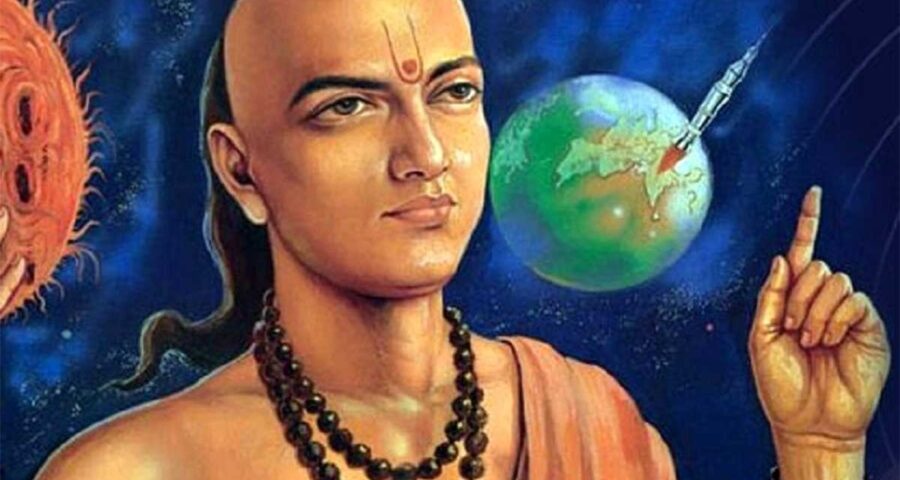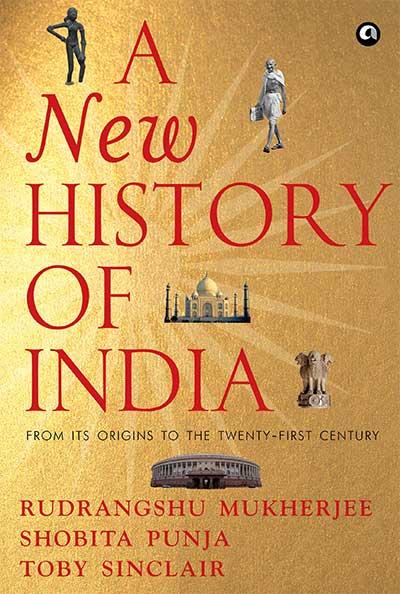In the ancient world there is a great deal of give and take and reciprocal learning.
India was an integral and important constituent of such interchanges of goods and ideas.
A fascinating excerpt from Rudrangshu Mukherjee, Shobita Punja and Toby Sinclair’s must read A New History of India.
Monks and ascetics belonging to different sects and beliefs were very significant in the transmission of ideas.
Ascetics immersed in the profound wisdom of the Upanishads and others belonging to different dissenting sects were the carriers of philosophical ideas, as were Buddhist monks and scholars.
It is well known that travellers from Southeast Asia and China visited India at different points of time and spent many months and years here.
They were not only the bearers of the message of the Buddha but were very often the preservers and repositories of old Buddhist texts. Thus, knowledge and wisdom originating in India moved across geographies.
Such movements of ideas were often enmeshed with trade.
Arab traders on the western coast of India carried with them some of the truly original findings of Indian scientists and mathematicians.
Bakhshali Manuscript, about 300-800 ce
This bark manuscript contains the earliest known example, to date, of the numeral zero. Carbon dating of the manuscript has established that the manuscript is over 1,600 years old.
The numeral in the manuscript is drawn as a shunya or zero, which symbolizes both nothing and infinity.
It is seen as a small dot or bindu, that is a symbol of great significance in Indian mathematics, art, and philosophy and suggests that from nothing this tiny dot emerges and emanates into an infinity of forms.
This was how the concept of zero, the numerals, the decimal system, the numerical value of pi, and the mathematical system of algebra became a part of the global system of knowledge.
Some of the discoveries and calculations of Indian scientists in the domain of astronomy were also fundamental contributions which, unfortunately, because of the dominance of Western science, have not received the recognition they deserve.
A remarkable example is Aryabhata — the astronomer and mathematician of the fifth century, whose work in astronomy and the field of trigonometry was original and foundational; he had also proposed the daily motion of the earth and a theory of gravity to explain why objects are not flung off the earth as it rotates.
This was later to be elaborated by Brahmagupta in the sixth century.
This corpus of knowledge travelling with Arab traders and sailors reached the city of Constantinople (present-day Istanbul), a major centre of learning and trade and from there moved to Venice, and thus contributed to the making of the world of European learning associated with the Renaissance.
In the ancient world there is a great deal of give and take and reciprocal learning.
India was an integral and important constituent of such interchanges of goods and ideas.
There was a general acknowledgement of what the Syrian bishop Severus Sebokht said in 662 ce: ‘There are also others who know something.’
An interesting facet of India’s achievements in the world of astronomy and mathematics was the attention scholars devoted to the development of calendars.
Calendars were important initially because they marked out days and periods of rituals, worship, and even of harvests.
In spite of the originary links of calendars with religious functions, the former cannot be established without the knowledge of astronomy and mathematics.
There are more than thirty indigenous calendar systems used in India, and several more were added from other countries–the Gregorian or (‘Christian’ or ‘Western’) calendar, the Hijri (or Islamic) calendar system, the Buddhist calendar system (followed for traditional and ritual purposes), and the Parsi (Zoroastrian or Jewish) calendar.
Likewise, the Tamil calendar is prevalent among the Tamil community, and the Kollavarsham calendar is used in Kerala.
The two main systems used in India are both lunar-solar (moon-sun) based.
The Vikrama calendar started from the Vikrama Samvat era, founded by Vikramaditya, signifying his coronation in 56 bce.
Its zero year is taken as 56 bce, according to the Western Gregorian calendar.
The Saka (or Shalivahana) calendar started from the Saka Samvat era, founded by Gautamiputra Satakarni (or Shalivahana) in 78 ce to celebrate his victory against the Sakas.
The main difference in the two systems is the observance of the New Year.
The Vikrama calendar starts its year with the month of Baisakh (April) while the Saka calendar begins the New Year on the first day of Chaitra (March).
Both calendars count one year of twelve lunar months, with twelve full cycles of the phases of the moon.
The difference between the lunar year of 354 days and solar year of 365 days was resolved in the Indian calendar by adding an extra month every thirty months.
This system of integrating the lunar and solar cycles makes the Indian calendar unique and more accurate than others in predicting agricultural seasons, so critical for the economy of India.
As each month is divided into two paksha or pakhwaaraa–a bright half when the new moon grows to full moon (Shukla Paksha) and a dark half when it wanes back to no moon (Krishna Paksha).
These moon phases and seasons determine the best period for sowing, harvesting, fishing, and festivities.
The presence and practice of these various calendrical systems clearly demonstrate the level of sophistication that was present among Indian scientists.
The latter had arrived at the calculation of 365 days to the year and also made adjustments by adding a leap month.
Varahamihira in the sixth century made the computation that the year consisted of 365.25875 days and this was only very marginally wrong.
These computations travelled and were appropriated into the body of Western knowledge.
The coming of Islam strengthened India’s links with West and Central Asia. India became part of the Persianate world.
A good illustration of India’s integration into the Persianate world is the career of the Iranian scholar and polymath Alberuni born in Central Asia in 973 ce.
His first visit to India was with the plundering army of Mahmud of Ghazni.
He chose to be engaged with India and all things Indian.
He wrote in the early eleventh century a text in Arabic called Tarikh al-hind (The History of India).
This work was built on Alberuni’s formidable intellectual attainments.
He had learnt and mastered Sanskrit and read Indian texts on mathematics, sciences, literature, religion, and philosophy.
He had conversed with many experts of the time and had closely observed social customs and conventions.
His book is thus a unique blend of Indian and Arabic scholarship. But he was astute and objective enough to note the differences between the people of India and the inhabitants of his own world.
Alberuni was not the only scholar from the Arabic world to be interested in India though he was by far the most remarkable.
Brahmagupta’s Sanskrit treatise on astronomy had been rendered into Arabic, as had several works on science, philosophy, and medicine.
It is important to note that unwittingly perhaps Alberuni was following in the footsteps of Chinese travellers, Faxian and Xuanzang who had visited India in the fifth and seventh centuries ce respectively to study Buddhism.
They had spent many years in India and left behind detailed accounts of what they had observed and experienced.
In the seventeenth century, just as the European trading companies were beginning their operations in India, an Italian Jesuit, Roberto de Nobili, visited South India and mastered Tamil and Sanskrit.
His linguistic abilities enabled him to produce texts in Latin and Tamil on Indian intellectual debates and discussions.
The French Jesuit Jean François Pons wrote a grammar of Sanskrit in Latin and also sent back a collection of original manuscripts to Europe.
Excerpted from A New History of India by Rudrangshu Mukherjee, Shobita Punja and Toby Sinclair with the kind permission of the publishers, Aleph Book Company.
Feature Presentation: Ashish Narsale/Rediff.com
Source: Read Full Article






